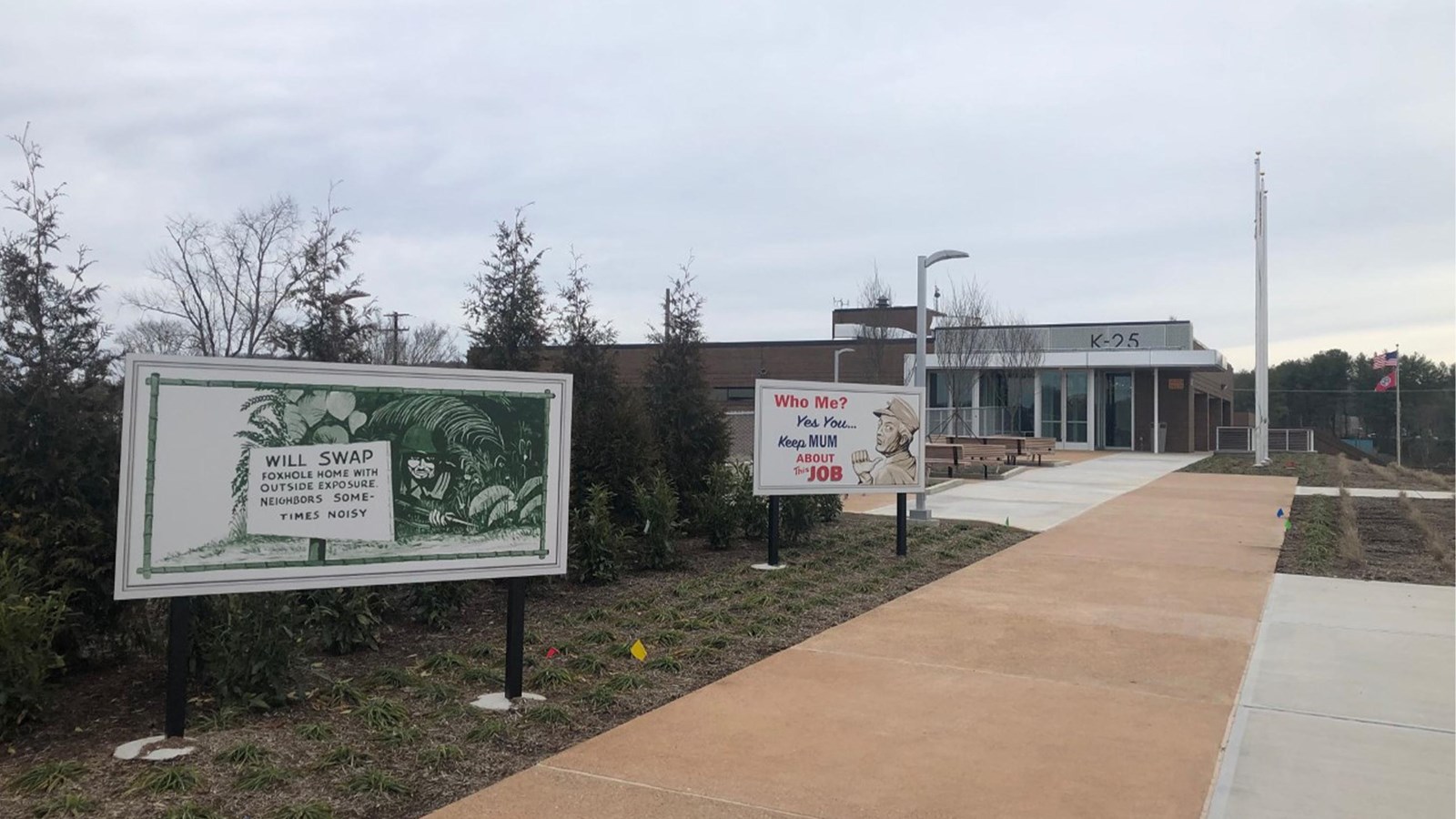Last updated: August 8, 2024
Place
K-25 History Center

NPS/KLEIN
Baby Changing Station, Benches/Seating, Gifts/Souvenirs/Books, Historical/Interpretive Information/Exhibits, Information - Ranger/Staff Member Present, Parking - Auto, Restroom - Accessible
The K-25 Gaseous Diffusion Plant was the world’s longest roofed building in early 1945, stretching a mile long. K-25 was not only exceptional for its size, but also for the groundbreaking technology inside. Scientists pioneered gaseous diffusion uranium enrichment technology at the K-25 building.
The Oak Ridge reservation included three industrial processes for uranium enrichment and experimental plutonium production. Buildings 9731, 9204-3, and K-25 together enriched a portion of the material for the uranium bomb, Little Boy, dropped over Hiroshima on August 6, 1945. In 1941 and 1942, gaseous diffusion held a lot of promise as a way to enrich uranium. However, despite the soundness of the theory, the process had yet to produce any samples of enriched uranium. Before construction of K-25 began in late summer 1943, scientists and engineers decided K-25 would produce a material that was about 50 percent uranium 235, which would then be fed into Y-12's Beta tracks for final enrichment. This would eliminate the troublesome upper part of the cascade. But even 50 percent enrichment was not assured, since a barrier for the diffusion plant still did not exist. The scientists’ decision to downgrade K-25 was part of a larger decision to double Y-12 capacity, which fit with General Leslie Groves' new strategy of utilizing a combination of methods to produce enough fissionable material for bombs as quickly as possible.
There was no doubt in Groves' mind that gaseous diffusion still had to be pursued vigorously. Physicists and engineers had already invested a lot of time and money in the program, and Groves hoped the diffusion method might yet prove successful. As 1944 began, construction of a plutonium production plant at the Hanford site in eastern Washington moved along at breakneck speed. Meanwhile, scientists at Oak Ridge continued to work on the gaseous diffusion method, but without success. A workable barrier design might still put K-25 ahead in the race for the bomb, but no one had been able to fabricate a barrier of sufficient quality; the uranium gas was simply too corrosive, the necessary tolerances too fine. By summer 1944, the ongoing barrier crisis made it apparent that the material produced by K-25 would be of such low enrichment that it would first have to be run through Y-12's Alpha tracks before it would be ready for the Betas. To accomplish even this low level of enrichment, Groves ordered a crash barrier program. Still, the production of enough uranium-235 for just one bomb by 1945 now appeared to be very much in doubt.
The K-25 Gaseous Diffusion Plant would go on to play a key role in World War II and the Cold War. Due to the K-25 structure’s deteriorated state, the enormous facility was demolished as part of an effort to clean and transform the site for reuse. The last shipment of debris from the K-25 demolition project left the site in 2014.
Continue Your Journey
Located near the footprint of the K-25 Gaseous Diffusion Plant, the newly-opened K-25 History Center provides visitors with a deeper understanding of K-25’s role in enriching uranium during the Manhattan Project and the Cold War. With more than 250 artifacts and interactive exhibits in a 7,500 square foot (697 sq m) space, the K-25 History Center tells the story of revolutionary science during the atomic age. In addition, visitors can learn more about the thousands of workers that operated the plant in secrecy throughout its rich history.
